Elephant Trees Area
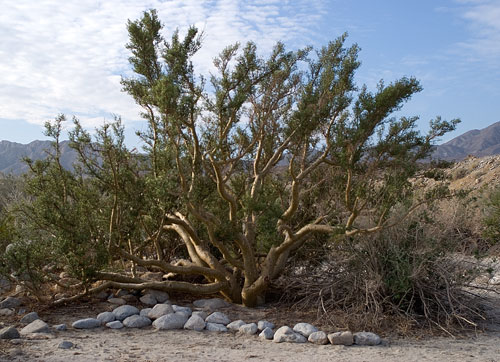
Elephant Tree, Bursera microphylla
Burseraceae
The area in and around the Elephant Trees Nature Trail was big news in the wildflower season of 2010. The diversity of plant species was remarkable. While many parts of Anza-Borrego received generous amounts of rain in the weeks before blooming, this area, an alluvial fan with rocky, sandy soil, benefited not only from rain but also from warm temperatures and its low elevation.
* * *
A word about the Elephant Tree. There is only one to be seen on the Elephant Trees Nature Trail. However, in 2010, Tom Chester and Mike Crouse counted 63 Elephant Trees in the 3-mile area from the Elephant Trees Nature Trail southwest to Starfish Cove at the head of Alma Wash.
Elephant Trees can also be seen in Torote Bowl in the Mountain Palm Springs area, and in Torote Canyon which is reached from Indian Gorge. Both places are off of County Road S-2 in the southern part of Anza-Borrego Desert State Park.
In addition, Chester, Crouse, and Mike Adams observed Elephant Trees as recently as 2009 in the Santa Rosa Mountains, in a steep, remote area above Clark Dry Lake. Marjorie Cleary is credited with the northernmost discovery of Elephant Trees, in Martinez Canyon in Riverside County in 1939.
* * *
The Elephant Trees Nature Trail is in the Lower Borrego Valley and is reached by going 6 miles south from Ocotillo Wells on Split Mountain Road. While the trail is less than a mile long, the area extends nearly three miles southwest up Alma Wash to Starfish Cove in the Vallecito Mountains. In February and March of 2010, ABDNHA Members Mike Crouse, Michael Charters, and Tom Chester found more than 90 different species in bloom in this area.
For us, it all began with an early-morning visit in March 2009. Thoughts of such plants as Ocotillo and Desert Lily in bloom at that time prompted us to keep an eye on the place.
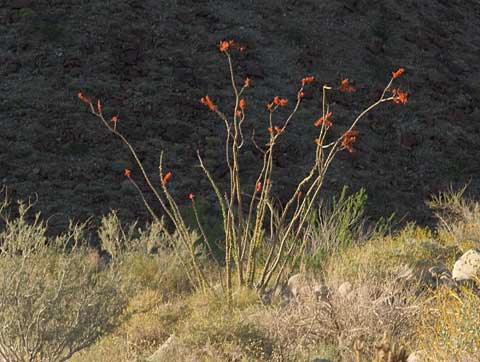
Ocotillo, Fouqueria splendens var. splendens
Fouqueriaceae
21 March 2009
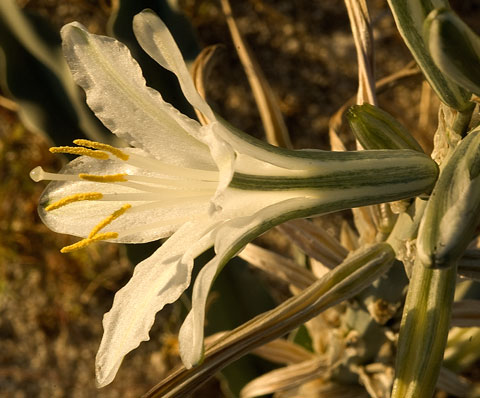
Desert-Lily, Hesperocallis undulata
Agavaceae
21 March 2009
Note on the Desert-Lily: This plant is a member of the Agave family.
7 January 2010 — We returned to find a few flowers. Honeybees were busy on the Desert Lavender.
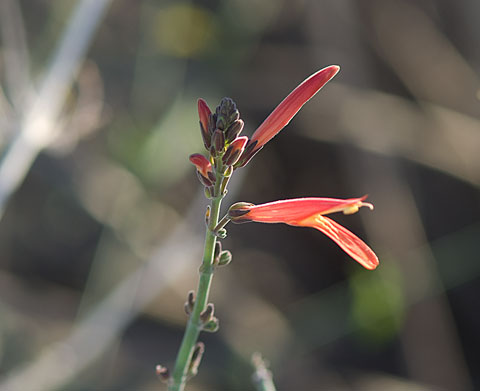
Chuparosa, Justicia californica
Acanthacaceae
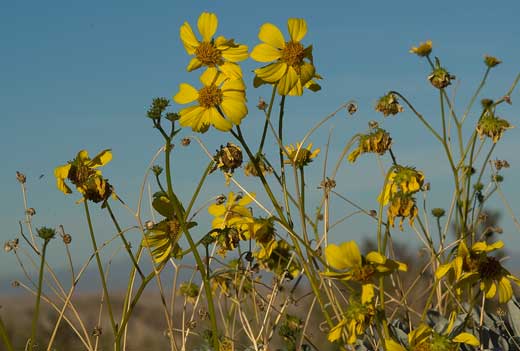
Brittlebush, Encelia farinosa
Asteraceae
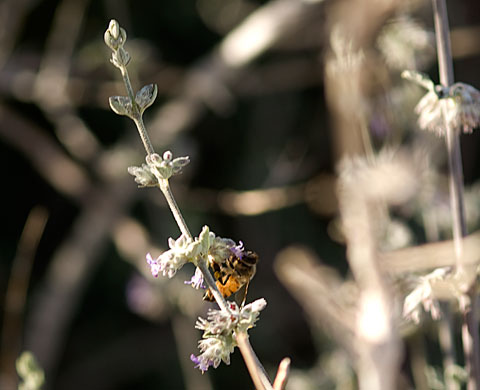
Desert Lavender (Hyptis emoryi) with Honeybee
Lamiaceae
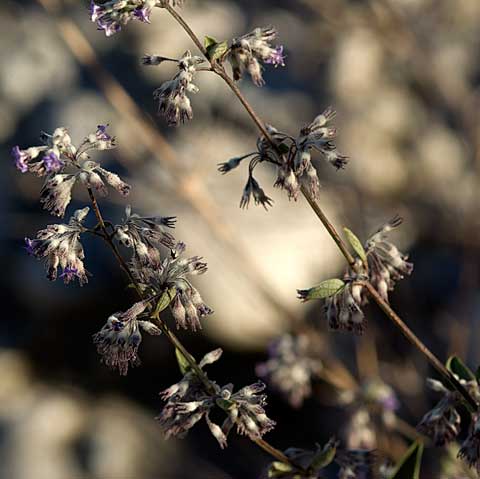
Desert-Lavender, (Hyptis emoryi)
Lamiaceae
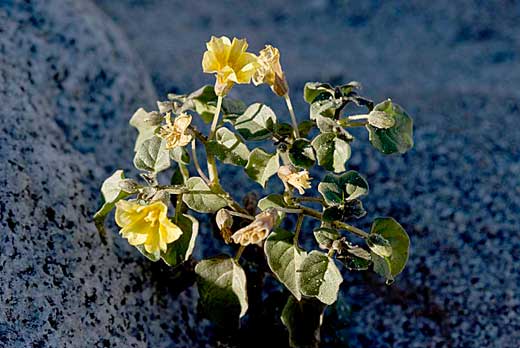
Greene's Ground-Cherry, Physalis crassifolia
Solanaceae
24 January 2010 — The buzzing continued.
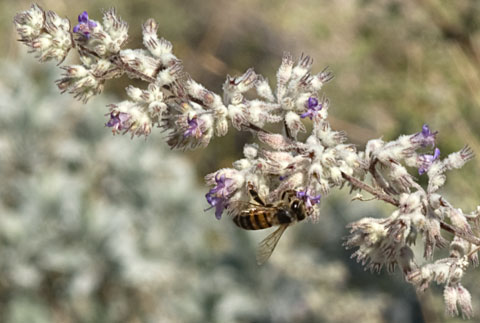
Honeybee on Desert Lavender, Hyptis emoryi
Lamiaceae
3 February 2010 — This was starting to look like a serious bloom.
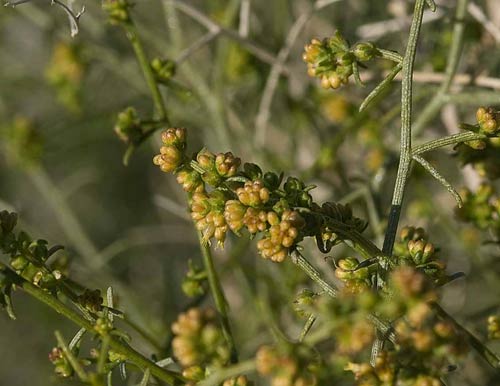
Cheesebush, Ambrosia Salsola var. Salsola
Asteraceae
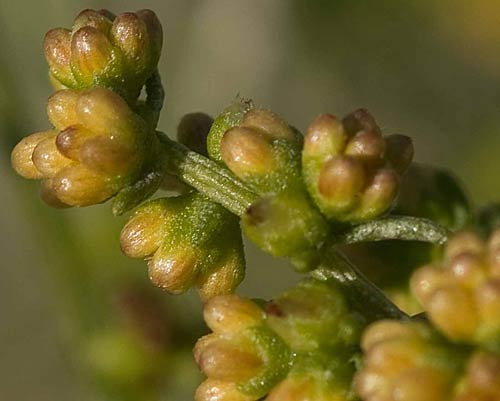
Cheesebush, Ambrosia Salsola var. Salsola
Asteraceae
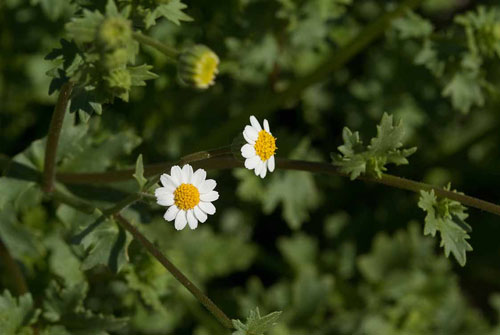
Emory's Rock Daisy, Perityle Emoryi
Asteraceae
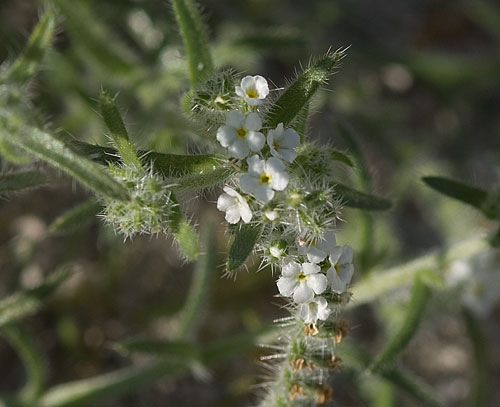
Narrow-Leaf Cryptantha, Cryptantha angustifolia
Boraginaceae

Narrow-Leaf Cryptantha, Cryptantha angustifolia
Boraginaceae
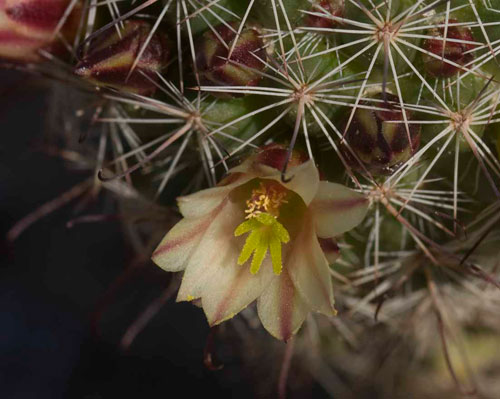
Fish-Hook Cactus, Mammillaria diocia
Cactaceae
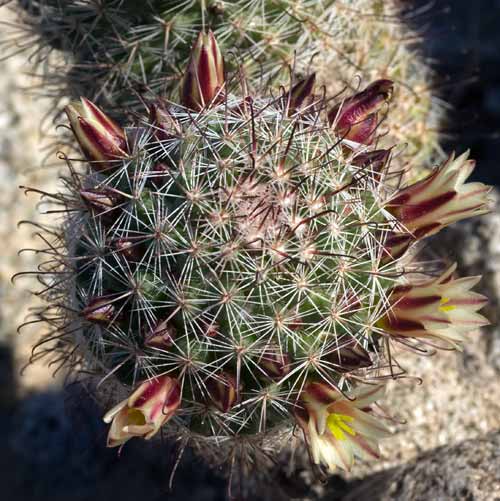
Fish-Hook Cactus, Mammillaria diocia
Cactaceae
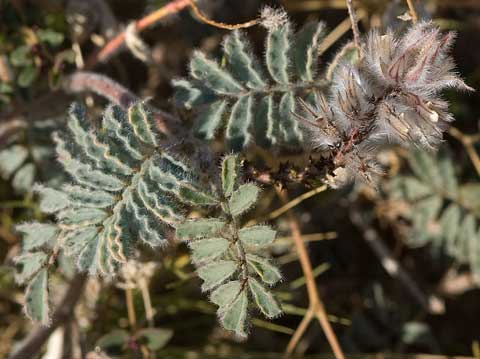
Soft Prairie-Clover, Dalea mollissima
Fabaceae
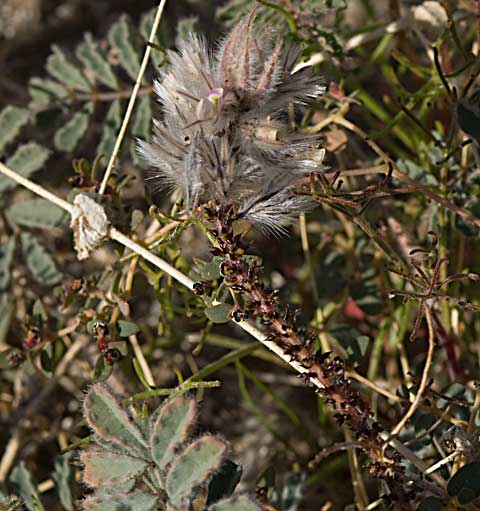
Soft Prairie-Clover, Dalea mollissima
Fabaceae
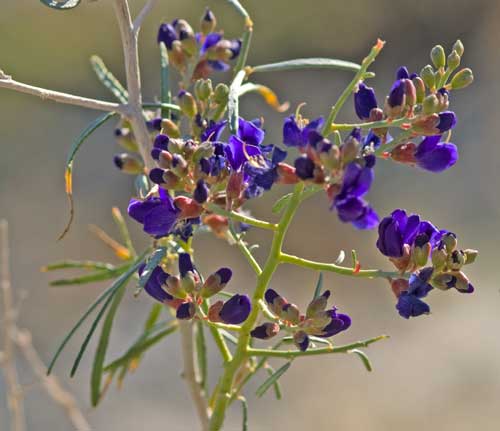
Indigo Bush, Psorothamnus schottii
Fabaceae
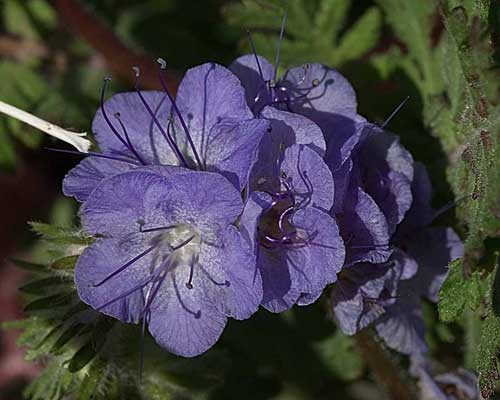
Wild-Heliotrope, Phacelia distans
Hydrophyllaceae
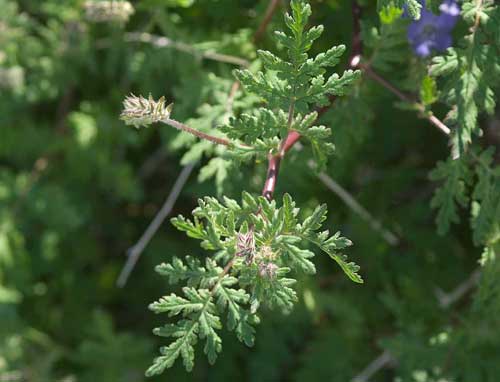
Wild-Heliotrope, Phacelia distans
Hydrophyllaceae
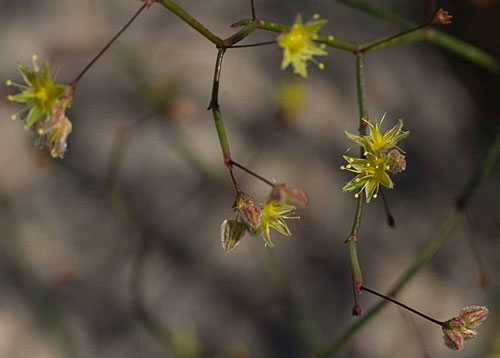
Desert Trumpet, Eriogonum inflatum
Polygonaceae
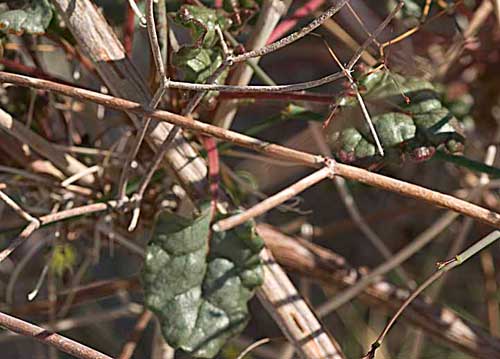
Desert Trumpet, Eriogonum inflatum
Polygonaceae
12 February 2010
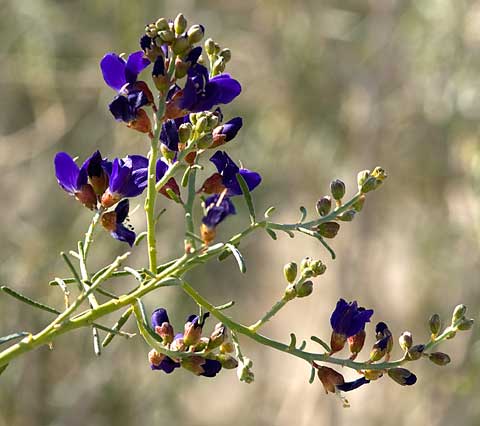
Indigo Bush (Psorothamnus schottii)
Fabaceae
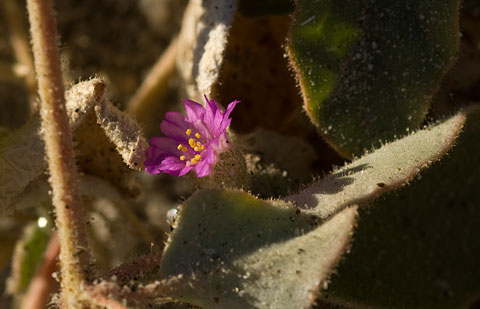
Trailing Windmills (Allionia incarnata)
Nyctaginaceae
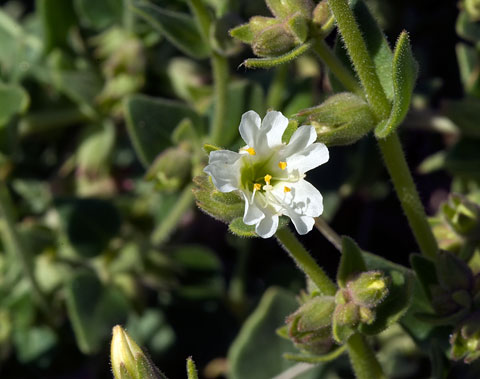
Long-Lobe Four O'Clock (Mirabilis tenuiloba
Nyctaginaceae
22 February 2010
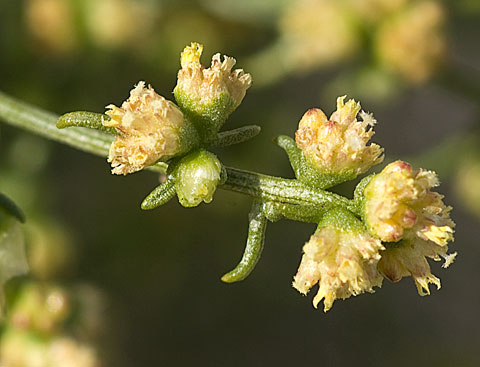
Cheesebush, Ambrosia salsola var. salsola
Asteraceae
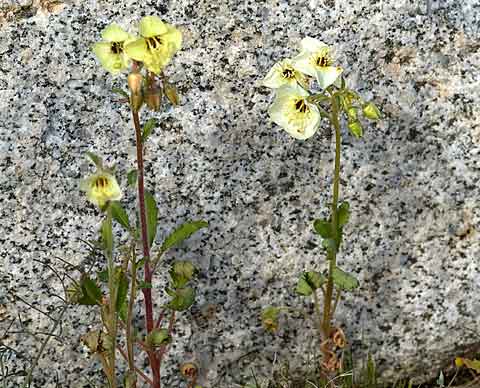
Peirson's Brown-Eyed Evening-Primrose,
Camissonia Claviformis var. Peirsonii
Onagraceae
Note on the Evening-Primrose: We usually see this plant with yellow flowers in the southern desert and with white or pink flowers in and around the Borrego Valley. It was interesting to see both colors in this area, which is about half way between south and north.
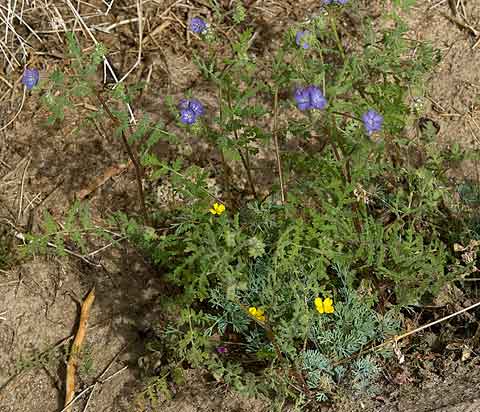
Wild-Heliotrope, Phacelia distans
Hydrophyllaceae
Dwarf Pygmy-Poppy, Eschscholzia minutiflora
Papaveraceae
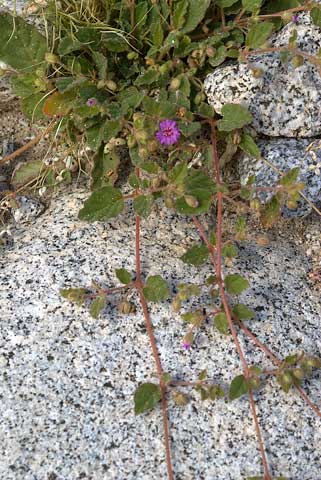
Trailing Windmills, Allonia incarnata
Nyctaginaceae
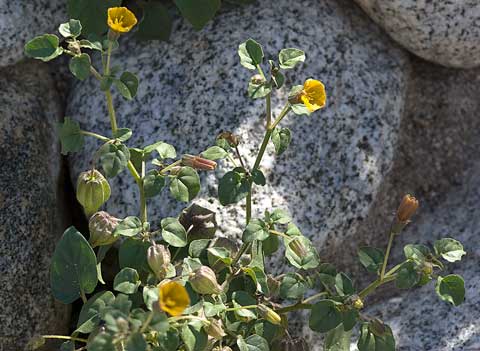
Greene's Ground-Cherry, Physalis crassifolia
Solanaceae
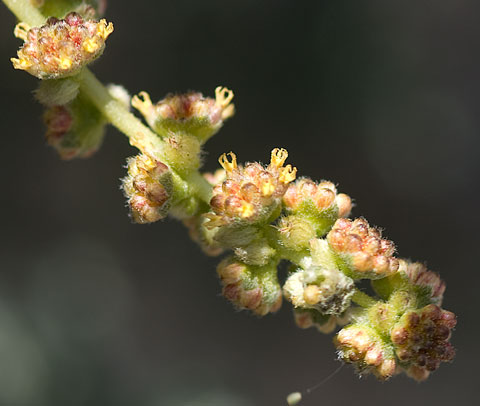
Burro-Weed, Ambrosia dumosa
Asteraceae
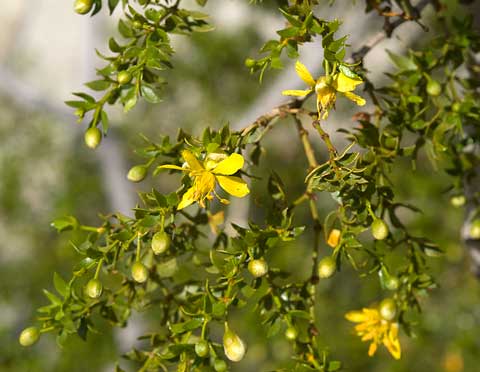
Creosote Bush, larrea tridentata
Zygophyllaceae
2 March 2010 — Flowers all over, including at least three species of cactus and Desert Five-spot.
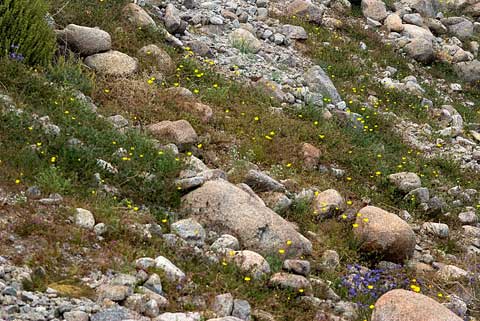
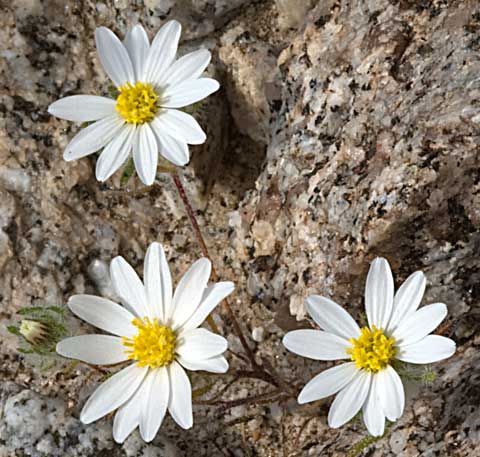
Mohave Desert Star or Belly Flower,
Monoptilon belliodes
Asteraceae
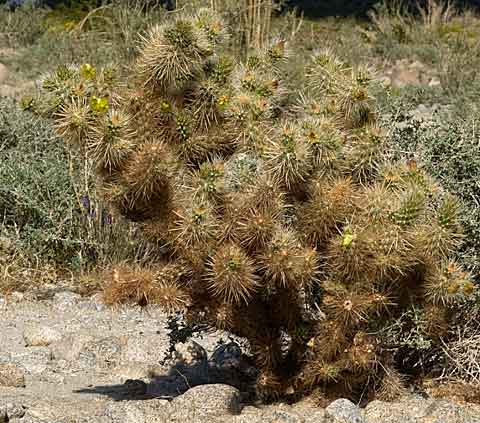
Silver Cholla, Cylindropuntia echinocarpa
Cactaceae
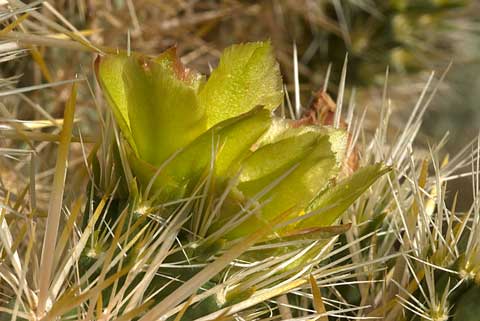
Silver Cholla, Cylindropuntia echinocarpa
Cactaceae
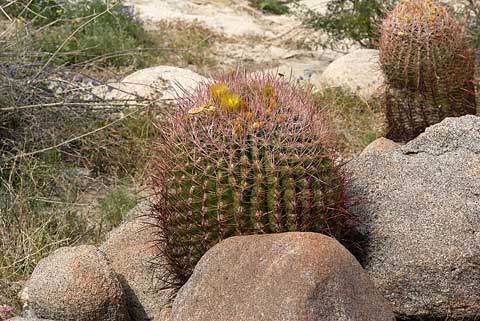
Barrel Cactus, Ferocactus Cylindraceus
Cactaceae
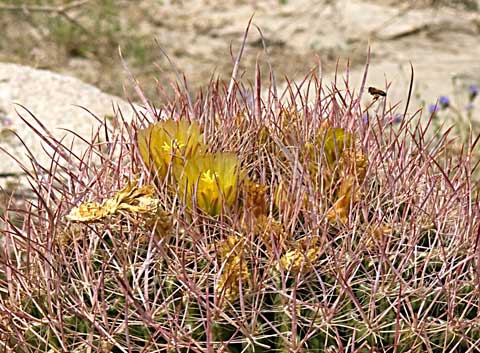
Barrel Cactus, Ferocactus cylindraceus
Cactaceae
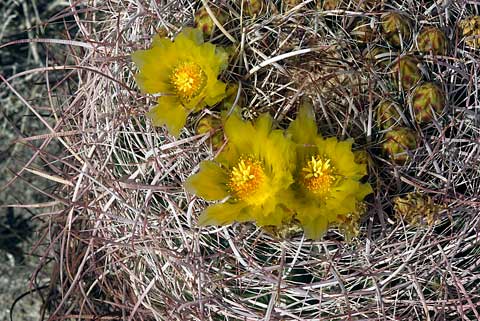
Barrel Cactus, Ferocactus cylindraceus
Cactaceae
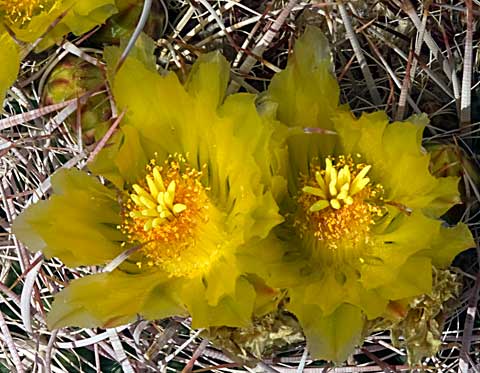
Barrel Cactus, Ferocactus cylindraceus
Cactaceae
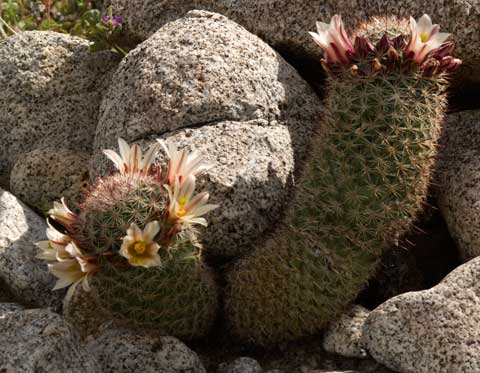
Fish-Hook Cactus, Mammillaria dioica
Cactaceae

Beavertail, Opuntia basilaris
Cactaceae
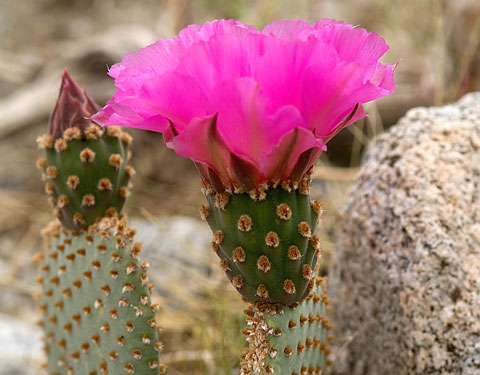
Beavertail, Opuntia basilaris
Cactaceae
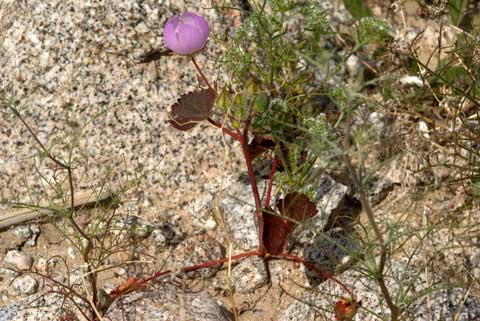
Desert Five-Spot, Eremalche rotundiflora
Malvaceae
10 March 2010
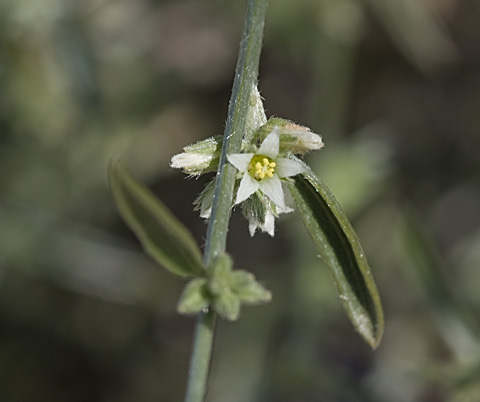
Desert Silverbush, Ditaxis lanceolata
Euphorbiaceae
26 March 2010 — Just when we thought we'd seen it all ...
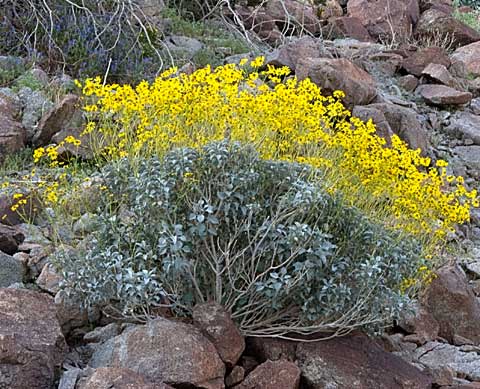
Brittlebush, Encelia Farinosa
Asteraceae
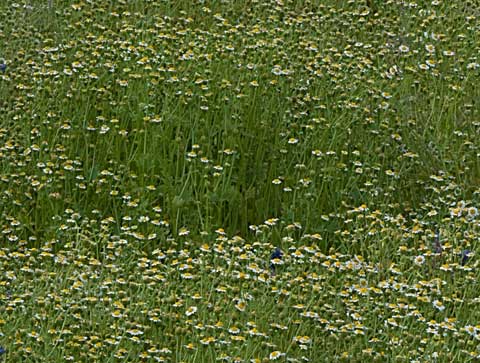
Emory's Rock Daisy, Perityle Emoryi
Asteraceae
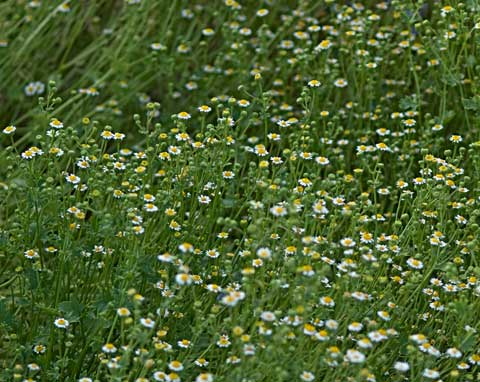
Emory's Rock Daisy, Perityle Emoryi
Asteraceae
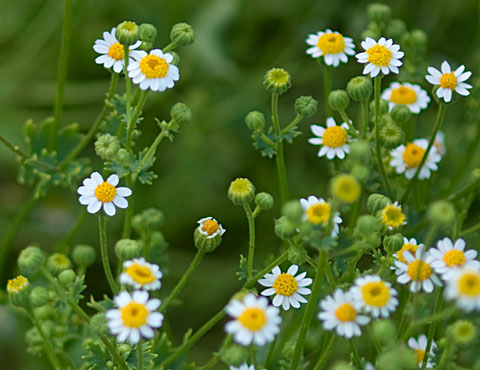
Emory's Rock Daisy, Perityle Emoryi
Asteraceae
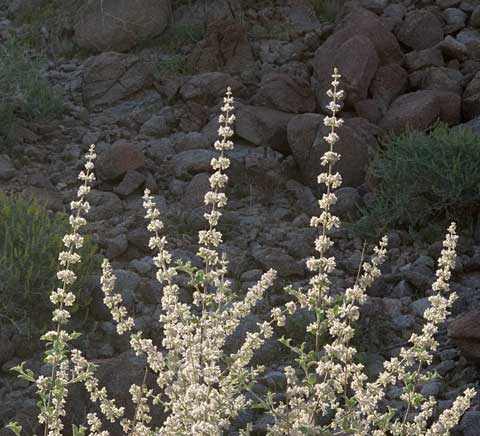
Desert Lavender, Hyptis Emoryi
Lamiaceae
The Honeybees have gone. The silence is deafening.
Back to Top | Back to Current Report
Anza-Borrego Desert Natural History Association
P O BOX 310 ( 652 Palm Canyon Drive) Borrego Springs, CA 92004-0310
Office 760-767-3052 | Desert Store & Nature Center 760-767-3098 | FAX 760-767-3099
